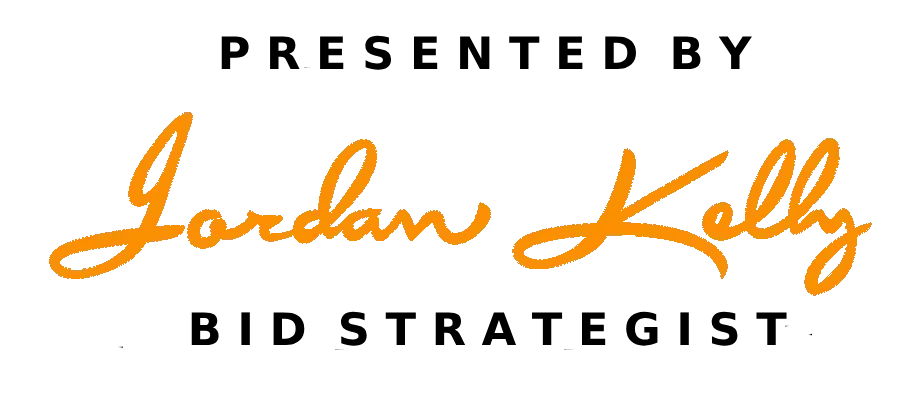ELITE CV BOOTCAMPS
Just as formulating a savvy bid strategy requires diligence and a big-picture perspective, so too, formulating a winning submission’s personnel profiles demands thoroughness and an uncompromising approach.
My modus operandi in ensuring this for my clients is, admittedly, not for the faint-hearted. But it’s this level of mutual commitment and discipline that stands to produce a bid that far exceeds the standards of the competition.
In line with my broader bid strategy methodology, my modus operandi in producing on-target, bid-specific Curricula Vitae is far more detailed, far more customised, and far more rigorous than the average bidding organisation will be used to.
The question is: Is the extra effort and investment worth it?
CVs are increasingly a key (if not THE key) focus of big-ticket bidding processes and their evaluation panels. The fact that, often, more marks are attributed to this single section within the overall submission than any other section within it, reflects their importance to the client or project owner.
Yet, these “CVs” are – by my observation – barely even customised to the bid in question.
Why not?
- Frequently, bidders deem it “unnecessary” to take a “ground up” approach to Curricula Vitae.
- It’s not immediately obvious to the bid manager or writer how such a newly-formulated CV would “be that different” than those included in previous bids.
- A light editing, with a few project-specific terms, references and involvements woven into an existing CV is, in fact, seen as a “customised” document.


‘The results of Jordan’s CV process and products exceeded expectations again.’
Slide description
‘Our first Main Road shortlisting in three years. Thanks, Jordan!’
Slide description
'Jordan Kelly's is the very best brain you could hire.'
Slide description
'Thrilled with your contribution' to winning our Defence bid.’
' . . . remarkable talent as a strategic writer . . . '
' . . . clever and incisive questioning . . . '
'An absolutely integral member of our bid team and an asset to our operation.'
'. . . skilful strategy facilitation and first-class bid writing . . . '
'A results-driven megaproject bidding strategist.'
'You played an integral role in our contract win.'
‘Your knowledge and insights are interesting and stimulating.’
' . . . strategy for a very large and crucial bid . . . '
‘ . . . creative and customer-focused tender documentation for our overseas rail project . . . ’
' . . . best possible non-price inputs to our winning bid . . . '
' . . . raised the morale of the bid team . . . personable and stimulating . . . '
'You are obviously a very talented strategic writer.'
'Jordan has a strategic mind and intuitive creativity; she is truly gifted.'
I do things very differently. Here’s how, and here’s why.
By complete contrast to the comparatively minimal thought-power and strategy that has been injected into outputs like these, my process draws on my substantial breadth and depth of skills, and involves the following steps:
First, I read – in detail – the Expression of Interest, Request for Proposal . . . or whatever existing material is available if the nature of the bid is a proactively planned submission or an “MLP” (Market-Led Proposal). I read any strategy documentation already produced by my client’s bid team. I study any existing Curricula Vitae of the delivery team members, subject matter experts, and any other individuals whose CVs are to be included in the bid submission.
Secondly, I conduct whatever research – primary or secondary (including competitive intelligence) – that I consider will be of value in informing the direction, underpinning strategy, “flavour” and content of the CV set.
Thirdly, with reference to all of the above, I map out the strategic but entirely malleable questioning outline (per team member) that will kick off each interview. With that outline, its intent, and its priorities fresh in my mind, I immediately conduct the interview, which I greatly prefer to conduct by phone for the sheer focus and lack of distractions associated with this method.
Fourthly, I structure and prioritise the highlights of the interviewee’s qualifications, skills and talents, other key points of coverage, and his or her project or other type of experience into an “easy-to-award-points-to” content flow.
Fifthly, I formulate this flow of componentry into a high-impact, high-readability piece that grabs the evaluator-reader by the eyeballs from the first word, and pulls him or her naturally, seamlessly and irresistibly through to its conclusion.
Finally, I undertake a process I’ve never seen evident in any submission’s CV collection, other than those produced by me:
I line up all the individual team members’ CVs and look at the “whole” . . . to see if the sum of the parts conveys the strongest possible team, and the one with the greatest alignment to the project owner’s / end-client’s priorities, key evaluation criteria, and any unwritten desires and sensitivities that have come to light either in the bid team’s investigations, or in the course of my own, complementary, research.
Wow. That’s some process, you’ll be thinking.
Your question: Are all those steps really necessary?
My answers come in the form of questions right back at you:
How invested are you in winning this contract?
How much have you already spent in staff time, hired-in help, expenses, and other above-the-line and below-the-line resources?
How important is it for you to demonstrate, to the project owner or other end-client, competitive superiority in your ability to deliver this contract, along with your competence in every aspect that represents a priority to this client organisation?
Which leaves me with only one question for you:
Precisely what part of my unique, comprehensive, and proven modus operandi, therefore, would you have me leave out?


